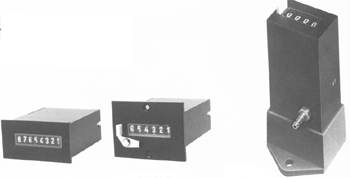Shopping for Pneumatic Valves
There are many possibilities when selecting a pneumatic valve. Each different type functions in its own way, which makes them practical for specific applications. If the devices are misused, then they will most likely be ineffective. In some instances, it could even be dangerous. Below, we want to offer some practical advice to both choosing and using the perfect pneumatic valves.
In essence, a directional-control air valve is the building block of a pneumatic circuit. The variations between positions, valve types, flow paths, and even the number of ports. Shoppers most also consider the mounting and controlling styles desired.
The first thing to think about is sizing basics. Valve sizing is directly responsible for how much flow a valve can deliver to actuators. Flow rate is commonly rated in terms of the coefficient of velocity (Cv).
As Cv rates get higher, so does the rate of flow. A particular equation is used to match a valve with an ideal pneumatic cylinder and pneumatic controls.
Cv = (A × S × a × Cf) ÷ (t × 29)
It is more common to find engineers referring to valve sizing charts that index valve CV’s again cylinder bore sizes. Ultimately, it gives the resulting cylinder speed in of stroke per second.
To compensate for losses in pneumatic systems, we recommend that shoppers oversize their valves by around 25%.
While shopping, keep in mind that there are many factors that contribute to the overall performance of a cylinder. The most common culprits are:
- Type and quantity of fittings that lead to the cylinder
- Tube capacity and length
- Air pressure
- Cylinder operating load
Pneumatic Controls
For more information on operating and shopping for pneumatic control systems, you should not hesitate to make our team your first call.
Related Reading:
- Basic Principles of Pneumatic Control
Pneumatic control systems are designed as pneumatic circuits. These circuits are formed with various components like pneumatic valves, cylinders, and directional control valves.
- Pneumatic systems are efficient and profitable.
- Flow Control Valves for Pneumatic Control Systems


- Ellis/Kuhnke Controls
132 Lewis Street Unit A-2, Eatontown, N.J. 07724
Phone: 1-800-221-0714
Fax: 732-291-8154
Email: Info@ekci.com
- Home Pneumatic Controls Technical Info CAD Drawings Contact Us Pneumatic Timers Blog Site Map
